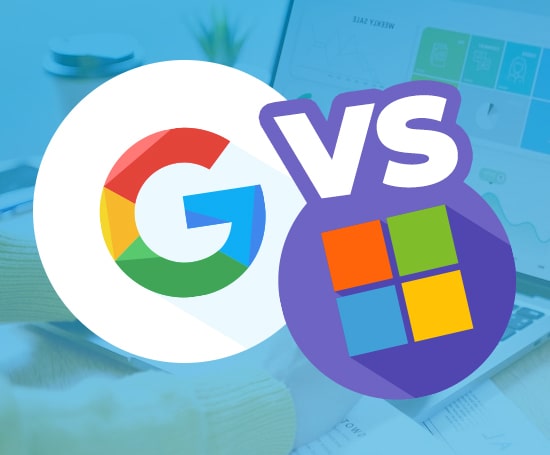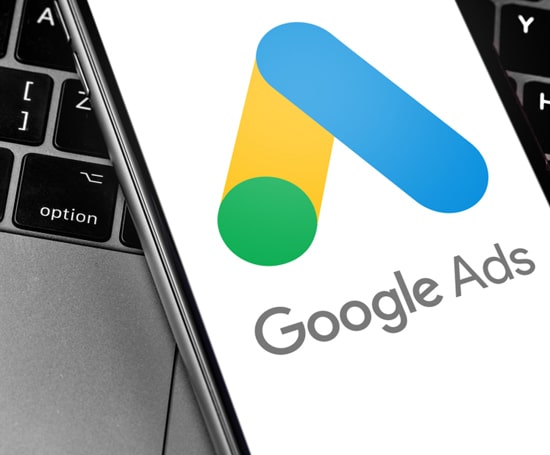Latest From The Sayu Blog



In the white paper Optimal Bidding for Pay Per Click Advertising I have discussed how we determine the optimal bid for a keyword given the conversion rate and the value of a conversion to the company (which could be a fixed value, or a percentage of the order value). The bid is the one that maximizes the total conversion value minus advertising cost.
Note that the models are estimated based on data for one particular keyword and for every keyword this model will be different. Also the conversion rate and the value of a conversion can be different for different keywords. There are some aspects in the real world that play a role which have not been included in the model as described in the paper, but are taken into account in the Sayu Bid Optimizer.
In this paper I will discuss how seasonality is accounted for, how keyword characteristics play a role, how to deal with low search volume keywords, and what we can do if we cannot measure online conversions.
One important aspect that I have not discussed in my white paper is seasonality. There are different ways in which seasonality can affect your PPC account.
First of all, there can be more or less searches for a particular keyword during certain periods of the week/year. For example, there may be more searches for consumer electronics towards Christmas, more searches for beach towels during the summer, more business related terms, for example promotional pens, during weekdays. Merjis mentions (Automated Bidding on AdWords):
"To effectively select the right price every Christmas, you need to have a model of the change in impressions for the previous Christmas. Building up that model is expensive. Retailers carry this in their heads, but it needs to be expressed to the model before it reaches the date… otherwise you find that the model is no longer predictive, but reactive, and always behind the curve."
Note however that the change in impressions (reflecting demand) doesn't always have an effect on what you need to bid for your keywords. If you have a limited budget, and more impressions for your ad become available due to a change in demand, then you could accept a lower position at a lower CPC to generate more clicks for your budget.
In times that impressions are limited, you may wish to pay more per click to get as many clicks as possible for your budget. If, however, you have an unlimited advertising budget, then a change in the number of impressions available will not have any affect on what you are willing to pay per click if you want to maximize your profit. Each impression of an ad for a particular keyword is equally likely to result in a click, and each of these clicks, is equally likely to result in a sale. In other words, the optimal bid for a keyword will be the same for each impression you can possibly get, whether you will get 10 impressions per day, or 1000.
So an increase in the number of impressions due to seasonality is not going to have an effect on the keyword's optimal bid. That doesn't mean that seasonality doesn't play an important role even if you don't have any budget limitations, but it is the change in the CTR, position, CPC for a given position, and probably most importantly, the change in the conversion rate that affects the optimal bid.
Seasonality can have an effect on the CTR of your text ads. For example, people searching for “DVD player”, may be looking for information or reviews on DVD players, and may click on links that give them the necessary information, while others who intend to buy a DVD player may be more likely to click on links of websites that sell them.
Towards Christmas there may be a shift of people wanting to buy a DVD player, and hence if you are advertising on PPC selling DVD players, you may see an improvement in the CTR during that period. This change in the CTR may affect the optimum bid for your keyword. If you have a limited budget this means you could settle for lower positions paying less per click, and getting more traffic for your budget. But also in case of an unlimited budget the optimum bid may change.
It may be that the optimum bid increases if the extra traffic gained by improving the position, increases. I will discuss later how the Sayu Bid Optimizer identifies changes in the CTR over time, and once a change has been identified, the Sayu Bid Optimizer determines whether the optimal bid needs to be changed due to the change in the CTR.
Also the Position and the Cost per Click may change due to seasonality, as your competitors may change their bidding strategy during certain periods of the year. Some of your competitors may be increasing their bids towards Christmas, and hence you could be paying more per click for a certain position, and if you don't act, your position may drop. These changes need to be taken into account when determining whether you need to change what you are bidding for your keywords.
Probably the most important aspect that can be affected by seasonality, is the Conversion Rate.
We have experienced that the conversion rate for flowers improves towards Valentines Day, for toys and certain consumer electronics it improves towards Christmas. If the conversion rate improves the optimal bid may increase to capitalize on the improved conversion rate.
Like with the CTR, position and CPC, we continuously check for changes in the conversion rate, and once a significant shift has been identified, we re-evaluate the optimal bid for a keyword. In the past, we have also used information from previous years about how the conversion rate changes, so we can be proactive rather than reactive to a change in the conversion rate.
Note however that the PPC market is changing continuously. The number of people searching for your keywords, the amount competitors bid for your keywords, and the number of competitors bidding for your keywords are all continuously changing. In addition to these changes in the PPC market, the competition in your market may change, more competitors could enter the market, competitors may lower prices, and due to an increase in the competition, your profit margins may become smaller.
All these changes related to Internet advertising/retail can be quite substantial, and hence information from last year is not always of much relevance, and we often have to rely on more recent changes in your conversion rate and the ppc parameters such as CTR, position and CPC.
To identify changes in the conversion rate, CTR, position, CPC, impressions and clicks (whether the change is due to seasonality or other factors), we use methods from Statistical Process Control (SPC).
SPC is used in industry to identify changes in production characteristics to be able to maintain quality. We use these methods to identify changes in the PPC characteristics, to be able to maintain a maximum profit. While in industry machine settings may be adjusted if there are changes in the characteristics of products produced, we can adjust the max CPC if there are changes in any of the PPC characteristics.
Initially we calculate a target value based on data over a certain time period, and following that, every day the average for the day is compared with this target value. If the daily average is statistically significantly different from this target value, we will be notified of the change, and the Sayu Bid Optimizer revaluates the optimum bid for the keywords for which a change was identified.
New target values will be set after a change has been identified, which is based on data since the change took place, and the monitoring process continues by comparing daily data with these new target values. With these methods big changes can be identified quickly, and although not as fast, we can also identify small changes that persist over a longer period of time. So for example, if the conversion rate is changing slightly over time, the Sayu Bid Optimizer will identify such a change and it will determine whether the keywords need to be changed.
As mentioned in the introduction, for each keyword the model to describe relations between the CPC, position and CTR could be different, and can depend on the keyword characteristics, like whether it is a broad match or exact match, or whether it is a product name or a brand name, but the basics will be the same. In general the CTR will improve as the position improves, and you will have to pay more per click to get in a higher position. Although it may be the case that for certain brand names the owner of the brand name pays less for the 1st position than a competitor is paying for position 2 (due to the fact that the owner of the brand name will have a higher CTR and higher quality score), this “inverted paid price” situation is not an issue for the Sayu Bid Optimizer. It would still be the case that for anyone bidding on a particular brand name (whether it is his own brand or a competitor's brand), he/she is most likely to pay more for position 1 than position 2, and we are not dealing with an inverted paid price when looking at the relation between CPC and position for that client.
An important aspect that can depend on the keyword characteristic is the conversion rate. For example, the conversion rate may be lower for a broad match keyword than an exact match keyword. When bidding on broad match keywords, your ad may appear for searches that don't contain the keywords you are bidding for, but contain similar words. If they appear for searches that are irrelevant to your business, this could bring down the conversion rate. An example of google showing your ad for a keyword that you don't have in the account, is where you bid on a plural, like ink cartridges, but your ad is also showing when people search for the single keyword (ink cartridge) even when you are not bidding on that keyword. It may also show for a synonym (for example printer cartridges) even if you don't have that synonym in your account. In itself this is not a problem for the models we use, however, it is advisable to have all these possible searches that could trigger your ad in your account, either as a keyword with its own appropriate bid, or as a negative keyword if you find that search irrelevant. The Google search query reports can be useful to identify such terms, but it is better to have additional tracking in place, as Google does not give away all individual searches that have triggered your ad. In fact, they don't give any info on searches that have triggered your add unless there was a click generated from it! Sayu has their own tracking system so that all information about search queries is available for traffic to the client's website, which has often been used to find new keywords to add to the account, as well as negative keywords.
In addition to the conversion rate itself, the keyword characteristic may also affect how the conversion rate changes when the position changes. Some of our clients claim that if they are not in 1st position, the phone stops ringing. As clearly there still is traffic for them when they are in 2nd or 3rd position, if the phone stops ringing when they are in position 2 or worse, that suggests that the conversion rate drops when moving down from position 1. These comments have mainly been made by clients that offer business to business products or services, and get enquiries and sales over the phone rather than online, and we have to rely on clients feedback regarding conversions. But for clients where we record sales as conversions, we have seen some examples where it appears the conversion rate is lower for a high position. However, in many cases there is insufficient data to determine whether there is a significant change in the conversion rate when moving up or down the listing, and if there is no statistically significant evidence of such a relation, we assume that the conversion rate does not depend on the position.
Unfortunately we cannot record online conversions for all of our clients. Some clients don't sell online, and although clients may have an enquiry form or something similar that people can complete on the website, it is often quite limited. Hence recently we have started to look at the bounce rate as an indicator of whether a keyword provides relevant traffic or not. People that leave the site without looking at any other pages than the landing page, are probably less likely to convert than people that visit more than one page on the website. Hence when determining bids for such a client, we would be willing to pay more for keywords that have a lower bounce rate. Basically, we consider anyone going to another page on the website to “convert”, as they seem to have become somewhat interested in the website. Using this concept, once more we can use our models to determine optimal bids for the keywords.
The Sayu Bid Optimizer estimates the relation between the CTR, position and CPC, but we need sufficient data to estimate these models with an accuracy that makes them useful to determine optimal bids. For keywords for which limited data is available, we may not be able to find a statistically significant relation between the CTR, position and CPC, and hence we may not be able to determine the optimal bid using data for that keyword only. However, Sayu structures the PPC accounts into meaningful campaigns and adgroups, where each adgroup is related to one core phrase, and the keywords are build around that phrase. By structuring the account in this way, apart from writing targeted text ads in each adgroup, we can also use the data at adgroup level to determine optimal bids for individual keywords, as all keywords within an adgroup are closely related. The long tail keywords in those adgroups, with filler terms such as buy, online, quality, best, etc., may have limited data, but when determining optimal bids we can use the data from the keyword itself in combination with other data from that adgroup to determine the optimal bid.
Although the model described in Optimal Bidding for Pay Per Click Advertising appears to be a much simplified version of reality, it still can be used in situations where the PPC campaigns are affected by seasonality, have keywords with different characteristics, have low volume keywords, and even in a situation where we cannot record online conversions.


